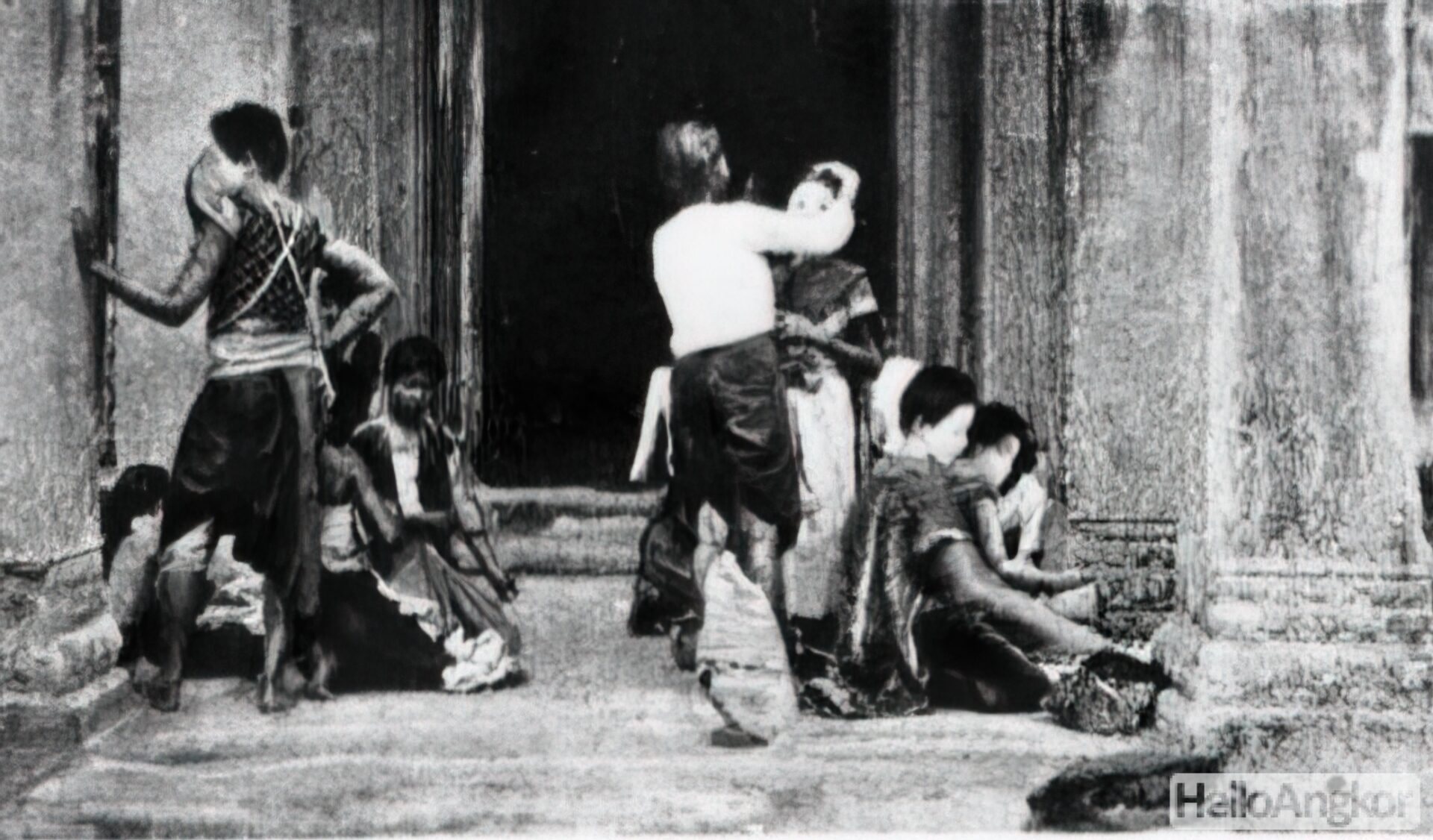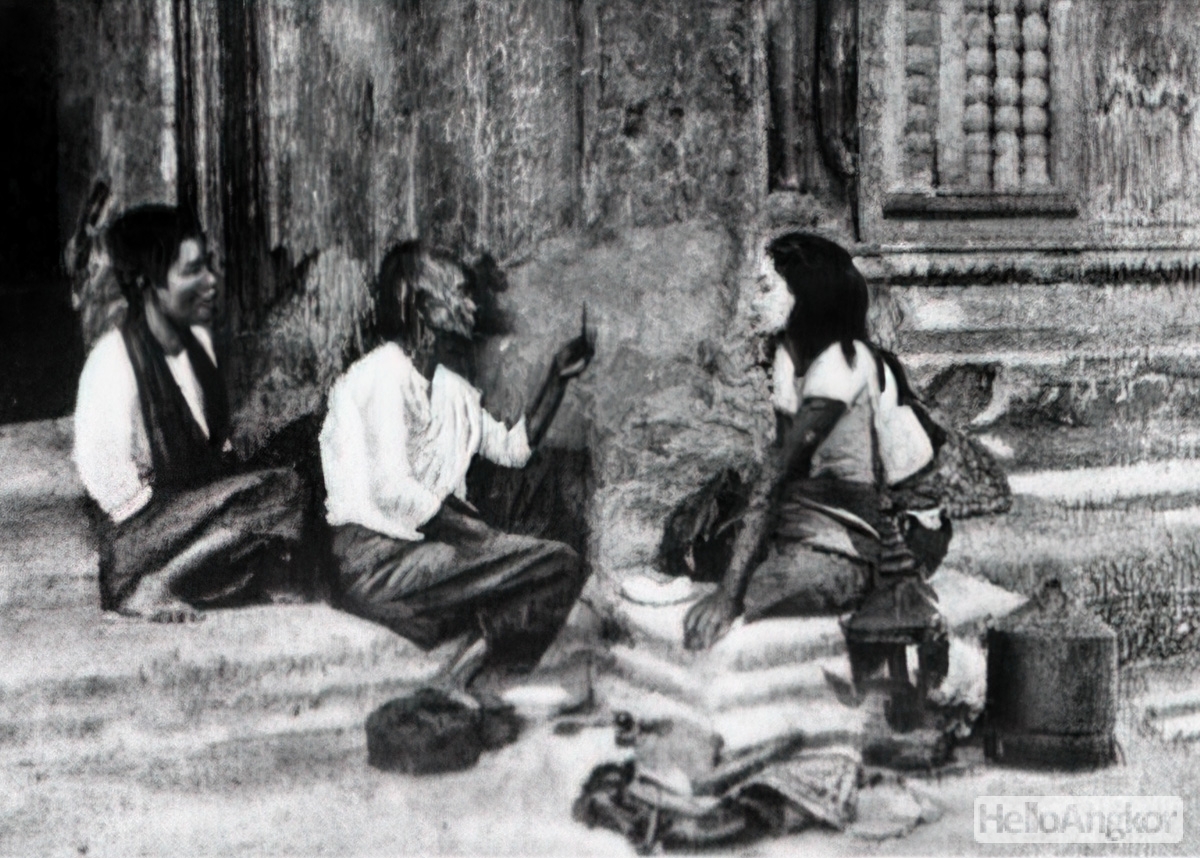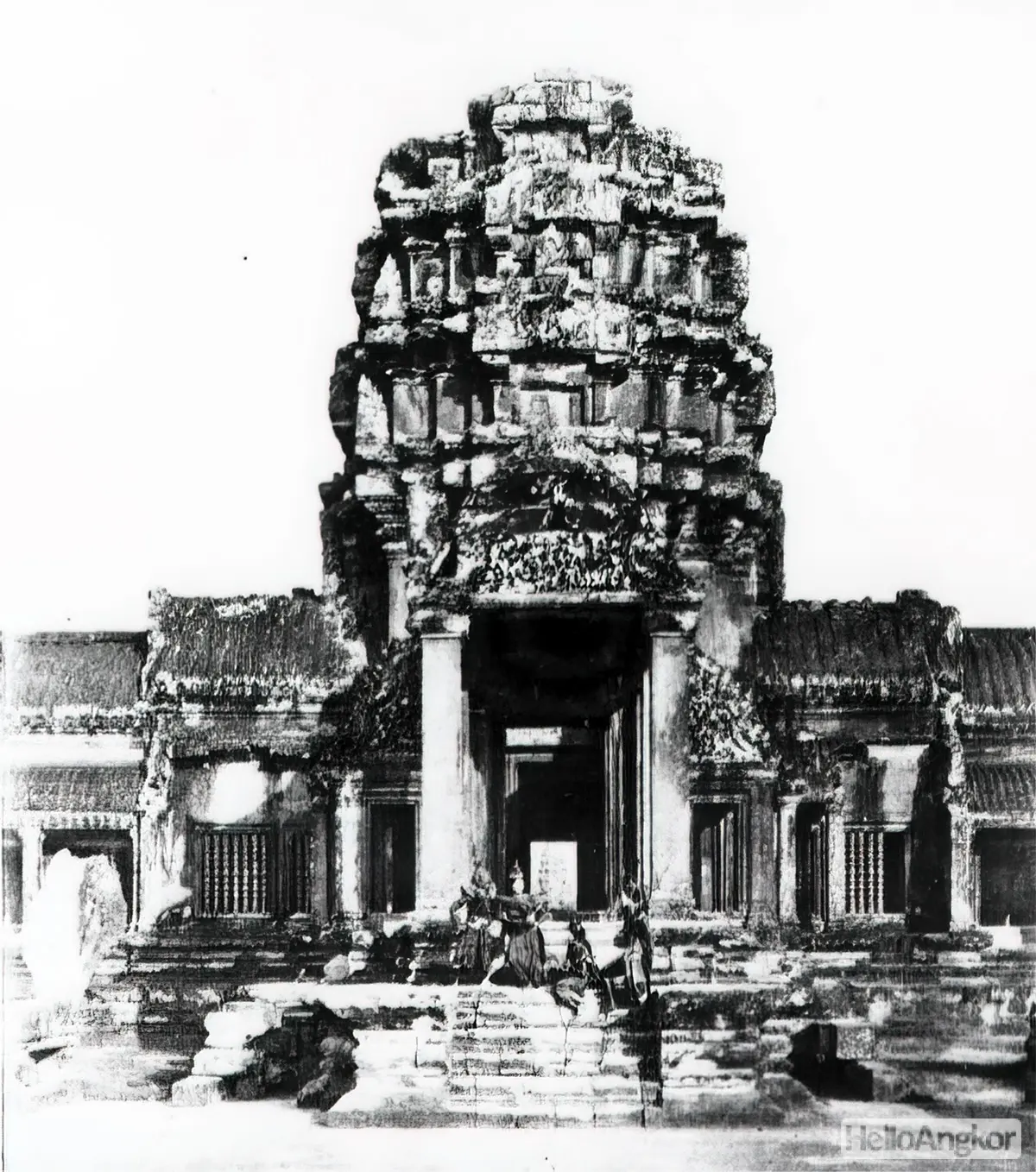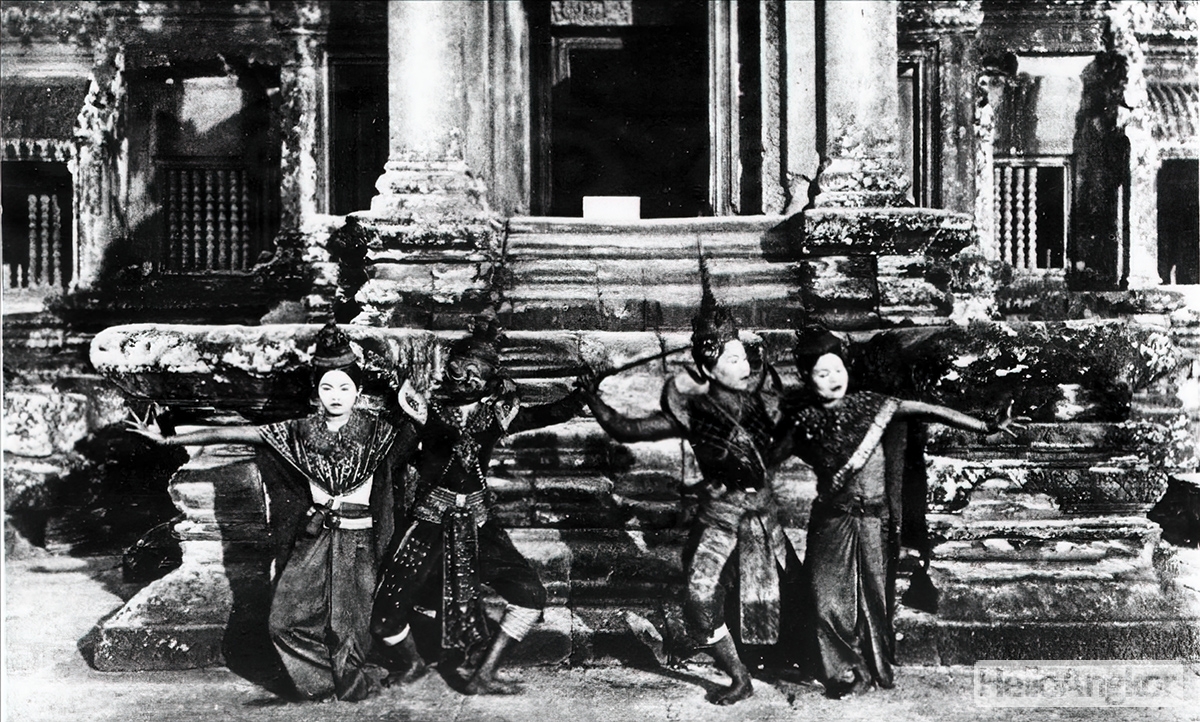A wonderful story from the early 1900s of a young Cambodian girl’s dream to join what we know today as the Royal Ballet of Cambodia. At that time, under King Sisowath, French records note the dance troupe consisting of around 100-120 girls including lead dancers, subjects, and students. This particular story and imagery comes from The Illustrated London News of 1923, originally written in French and translated by the publication. The images have been upscaled for the internet and I’ll post the story in full and unedited, with a couple of additions for clarity in brackets. The photographer’s name is not mentioned, possibly the author.
So, I will let the original author who was a French official serving in Cambodia, M. V. Forbin, take over as he recalls someone attracting his attention.
“GOOD MORNING, Monsieur; how are you?”
“Very well, Mademoiselle, thank you.”
I had hesitated before replying, as I was surprised to hear a young Cambodian speak such good French. They were in a cart, which our car had all but upset on the road which led us from Pnom Penh (Phnom Penh) to Angkor. The familiar tone of the young woman seemed to suggest that she knew me personally, and I was embarrassed to find that I could not remember her, so took refuge in diplomacy to get out of this difficult situation.
“You speak French like a Parisian, Mademoiselle; it is marvellous.”
“Have I not taken advantage of your lessons?”
“Of my lessons?”
“I see you do not recognise me. It is true that I have grown during the last ten years. Kandali — does not that name mean anything to you, Monsieur ?”
“Kandali. Are you little Kandaliette? But, of course, I remember now. You are my little Kandaliette with whom I exchanged French lessons for Cambodian lessons. And I am delighted to meet you.”
Ten years ago I had started my career as a Colonial official at Pnom Penh (Phnom Penh), the capital of Cambodia, and I had in my service the father and mother of Kandali, who was then a charming little girl of between eight and nine. After a sojourn in France and several years service at Tonkin, I took up a newly created appointment at Phnom Penh, and now I was taking advantage of a tour of inspection to see the celebrated ruins of Angkor Vat (Angkor Wat).
“If I can trust my memory, Kandali,” I remarked, “your ambition when you were little was to become a dancer, and in that capacity to be attached to the King’s Court?”
“It is an ambition I hope to realise soon,” she declared, not without pride.
She went on to tell me that she had studied, and that she would shortly be examined to decide whether she would be admitted to the royal corps de ballet or not. Her examiners would be old dancers belonging to the Court. Following an ancient custom which has come into fashion again during the last twenty years, she was making a real choregraphic pilgrimage in going to Angkor Vat, with some other young girls whose ambition it also was to become royal dancers.
That tradition may be regarded as being either touching or silly; it all depends whether you look at it from the European or Oriental point of view. By executing sacred dances on the threshold of the venerable temple, which reminds the natives of the past splendour of their race, the little Cambodian dancers are convinced that they are fulfilling an act of piety, which will ensure them the protection of the good goddesses and the realisation of their hopes.
I made up my mind to witness the mystic dances of Kandali and her companions on the morrow, but I had counted without the slowness of their carriage.
Whereas our motor made the journey in six hours, they only got to the ruins two days later. Luckily, my inspection had kept me pretty long at Nakhor Thom (Angkor Thom), a neighbouring locality, and I was back at Angkor Vat in time to see the arrival of the cart, and to help the old and young pilgrims to alight.
The troupe consisted of four dancers, two old women (venerable matrons expert in the art of costume and make-up), and two little girls who had in their charge the indispensable accessories-diadems of gilded bronze, metal masks, heavy necklaces and pendants, and other objects. A chest of teak wood contained all that was required to paint the dancers’ faces.
The company took possession of a spacious hut which the French authorities have erected in the vicinity of the ruins for the use of Cambodian pilgrims. Beside it is a more comfortable house for European tourists. It was in the hut that the dancers changed their costumes, but for some reason -probably an old custom- they finished dressing and made themselves up on the actual threshold of the pagoda, in a little courtyard where the priestesses of Angkor probably danced in far-off days when this majestic building was visited by thousands of worshippers.



At last, after the matrons had fixed the tiaras with their long gilded points on the heads of the dancers, the ceremony began. Great knowledge of the religious traditions of the Cambodians would be required to describe accurately and to interpret the dances and miming which now took place. Several episodes represented the eternal combat between the Spirit of Good and the Spirit of Evil.
Kandali-who, in spite of her sex, represented a hero had a fierce duel with a masked companion who played the part of a demon, and whom she vanquished after very complicated steps.



I was much more impressed by some miming which the four dancers displayed in the principal courtyard of the pagoda, in front of a bas-relief which is said to date from the first century of the Christian era, and represents dancers. I was struck by the similarity of pose between the living dancers and those portrayed in stone. Did they copy them, or were they merely following a tradition of nearly twenty centuries? Both suppositions are admissible.
A few months later I was informed that the pilgrimage had been successful. Mille, Kandali and her three companions passed their examinations brilliantly, and now belong to the corps de ballet of his Majesty King Sissowath of Cambodia.
And I rejoiced for Kandali, who has realised the dream of her life.
V. Forbin
